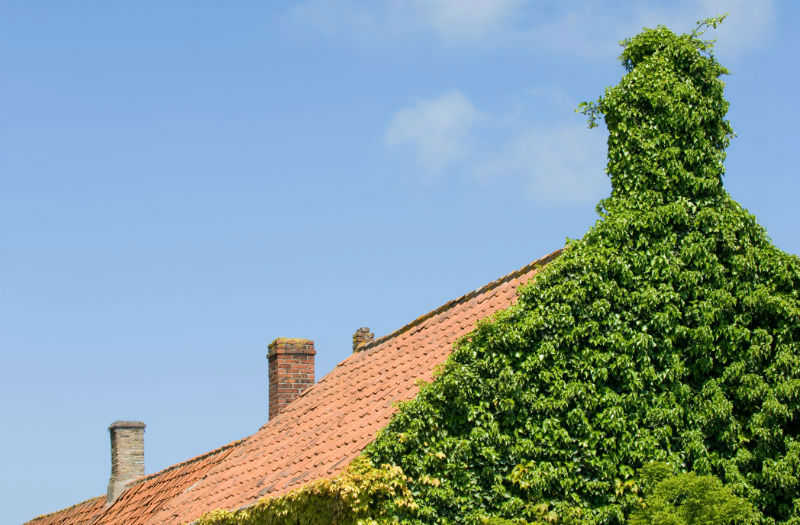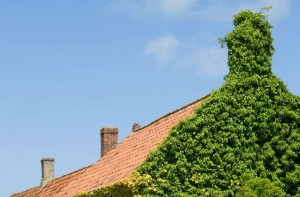While many homeowners like the look of ivy and other climbing vines growing against their masonry chimneys, they probably do not like the problems associated with these plants. Ivy roots can be invasive and grow into cracks and crevices that exist in bricks and mortar. If the masonry work has been well-constructed, ivy and climbing vines may not present any issues; however, these plants can severely damage bricks and mortar that have already been weakened as well as masonry structures built before 1930. Ace Chimney Sweeps would like to share with you some information from the San Francisco Gate about how ivy and other climbing vines can damage your masonry chimney.
Which types of ivy can do the most damage to a masonry chimney?
Two of the most common types of ivy seen scaling homes and chimneys in this area are English ivy and Boston ivy, which respectively climb via aerial rootlets and holdfast discs. What can be damaging is not only do these types of ivy grow into cracks and crevices, but they also secrete a cement-like compound to hold them in place.
How does ivy damage a masonry chimney?
If your masonry chimney has weakened or loose bricks and crumbling mortar, the roots of ivy have plenty of opportunities to invade these crevices. If you try to remove attached ivy roots from your chimney, you may end up pulling down bricks along with the plants and have a collapsed chimney structure. Not only does the ivy grow into the weakened brick structure, but it also hides any masonry damage that could be present in the structure of your chimney.
Why are homes built before 1930 so much more vulnerable to damage from ivy and other climbing vines?
The stronger and more durable Portland cement was not used in masonry construction until 1930. The lime-based mortar that was previously used is much weaker and is more susceptible to erosion damage. If you have an older home built before 1930 with ivy growing on your chimney, you will need to contact us at Ace Chimney Sweeps to inspect the condition of the masonry materials before you attempt to remove the ivy.
I love the look of climbing vines growing against my masonry chimney. Do I have any alternatives to ivy?
If you would like to grow climbing vines along your chimney, you should first get a professional chimney inspection from Ace Chimney Sweeps to find out the condition of your masonry work. Well-built, solid masonry walls can withstand both English and Boston ivy. You do have other alternatives, however. You can plant a climbing vine such as clematis and roses that is not as aggressive, or you can build a support like a trellis beside your chimney that can be safely removed from your chimney whenever it needs to be inspected or repaired.
Questions about growing ivy and climbing vines on your masonry chimney? Contact us at Ace Chimney Sweeps to learn more tips from our chimney experts.


